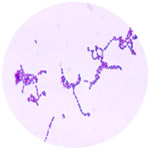h. Streptococcus pneumoniae
|

|
This organism causes more than 800,000 deaths among children younger than 5 years (Saha et al. 2009). Although availability of effective pneumococcal vaccines reduces the prevalence of invasive disease in vaccinated children and those they contact in the home (Hicks et al. 2007; Hicks et al. 2011), recent evidence suggests an upward trend in invasive infections by serotypes that are not covered by available vaccines (Rosen et al. 2011). From 2001 to 2004, 824 consecutive S pneumoniae isolates from all Kuwait teaching hospitals and primary-care centers showed 63% resistance to penicillin (55% were of intermediate resistance and 8% were of full resistance) (Mokaddas et al. 2007). S pneumoniae isolates collected during 2000 to 2004 in the United States showed 29.3%, 21.2%, 0.9%, and 0.02% of isolates to be resistant to erythromycin, penicillin, levofloxacin, and telithromycin, respectively. The proportion of isolates exhibiting multidrug resistance remained stable at ~30% during the 4-year study period (Jenkins et al. 2008). The antimicrobial susceptibility of S pneumoniae isolates from hospitalized children in Bangladesh revealed complete resistance to chloramphenicol and cotrimoxazole in 6% and 32% of patients, respectively (Saha et al. 2009).
|